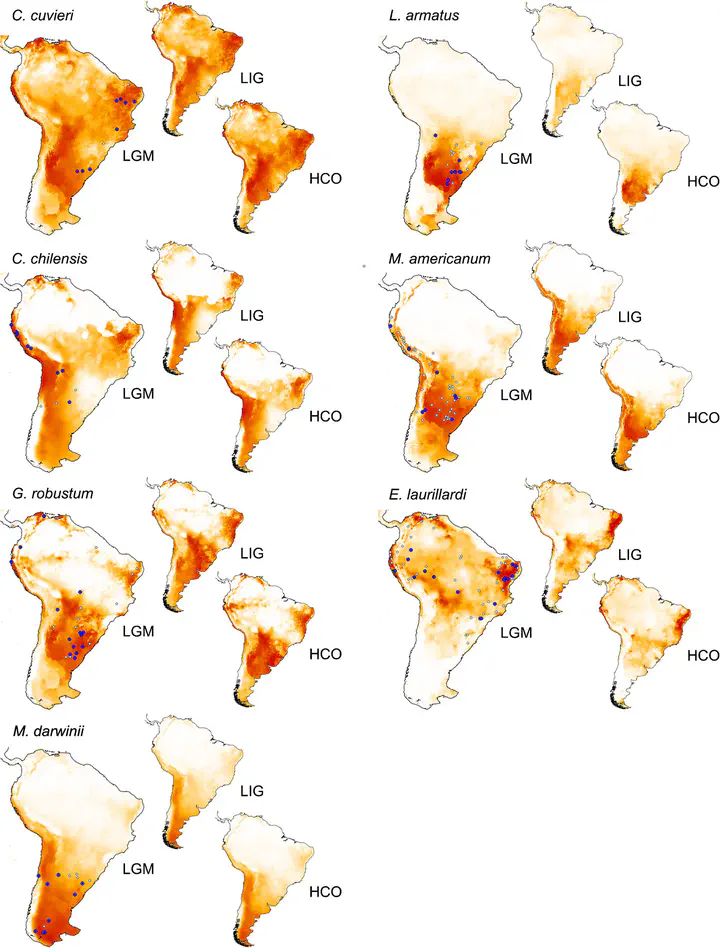Potential distribution of fossil xenarthrans in South America during the Late Pleistocene: Co-Occurrence and provincialism

Abstract
Species distribution models (SDMs) are helpful for understanding actual and potential biogeographical traits of organisms. These models have recently started to be applied in the study of fossil xenarthrans. SDMs were generated for 15 South American late Pleistocene xenarthrans: eight Cingulata (Glyptodon clavipes, Doedicurus clavicaudatus, Panochthus tuberculatus, Neosclerocalyptus paskoensis, Pampatherium typum, Pampatherium humboldtii, Holmesina paulacoutoi, and Holmesina occidentalis) and seven Folivora (Glossotherium robustum, Lestodon armatus, Mylodon darwinii, Catonyx cuvieri, Catonyx (=Scelidodon) chilensis, Megatherium americanum, and Eremotherium laurillardi). Models were evaluated for three periods: the last interglacial (LIG), the last glacial maximum (LGM), and the Holocene climatic optimum (HCO). Co-occurrence records were studied based on the overlap of the potential distributions and compared with the available biome reconstructions of South America during the LGM to analyze species distribution patterns, ecological requirements, and possible interactions. Our results suggest the existence of provincialization within xenarthran megamammals grouped in at least three bioregions. Northern and southwestern taxa overlap in the Río de la Plata region where also some endemic taxa are found. We observed overlapping potential distributions but separated and continuous realized distributions between closely related xenarthrans suggesting competitive exclusion. A generalized reduction in potential habitats at the end of the Pleistocene was not obvious as some taxa show stable potential areas during HCO when comparing with LGM. Nonetheless, fragmentation of the most suitable areas due to climate variation and the impact of reduction in available land due to sea level changes cannot be ruled out as involved in the extinction.